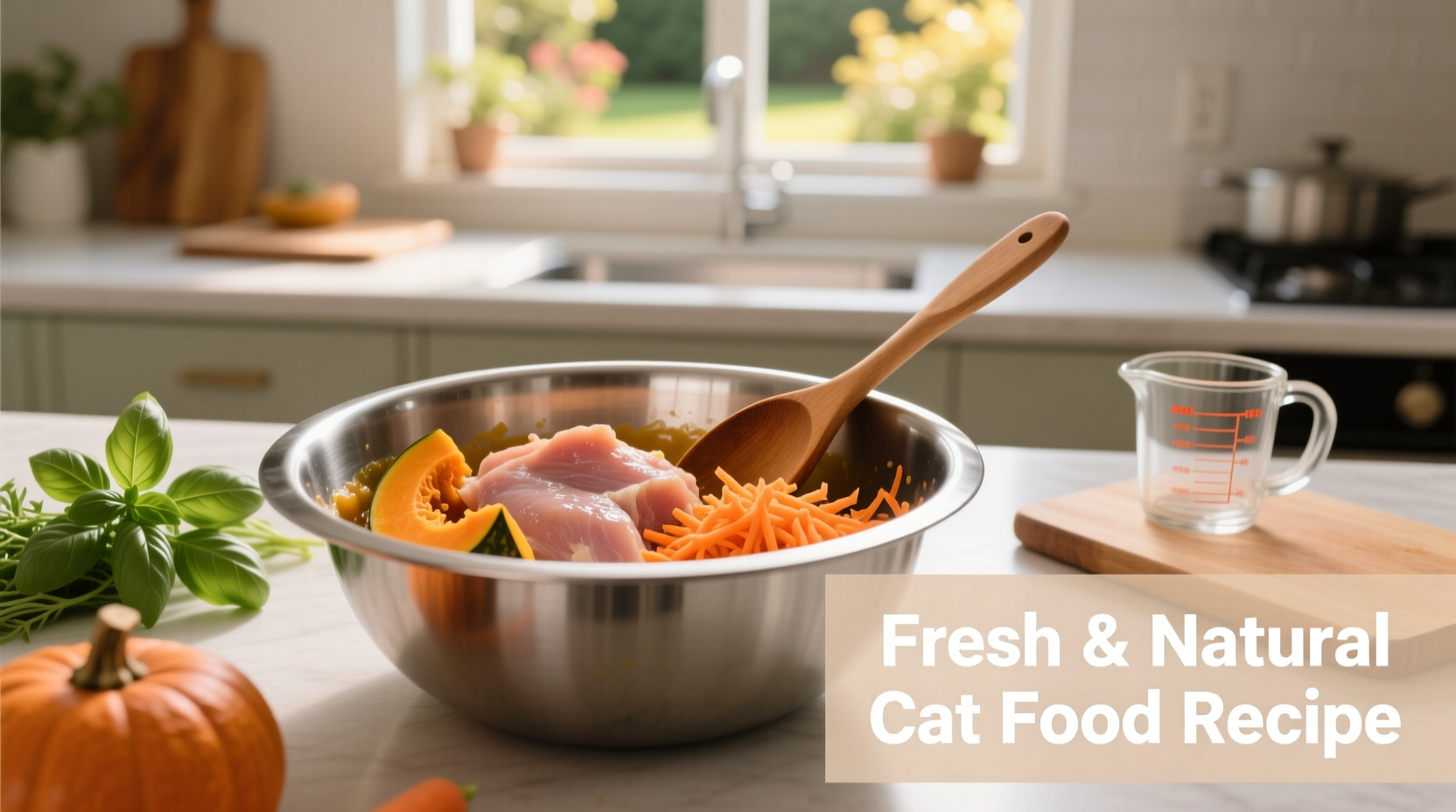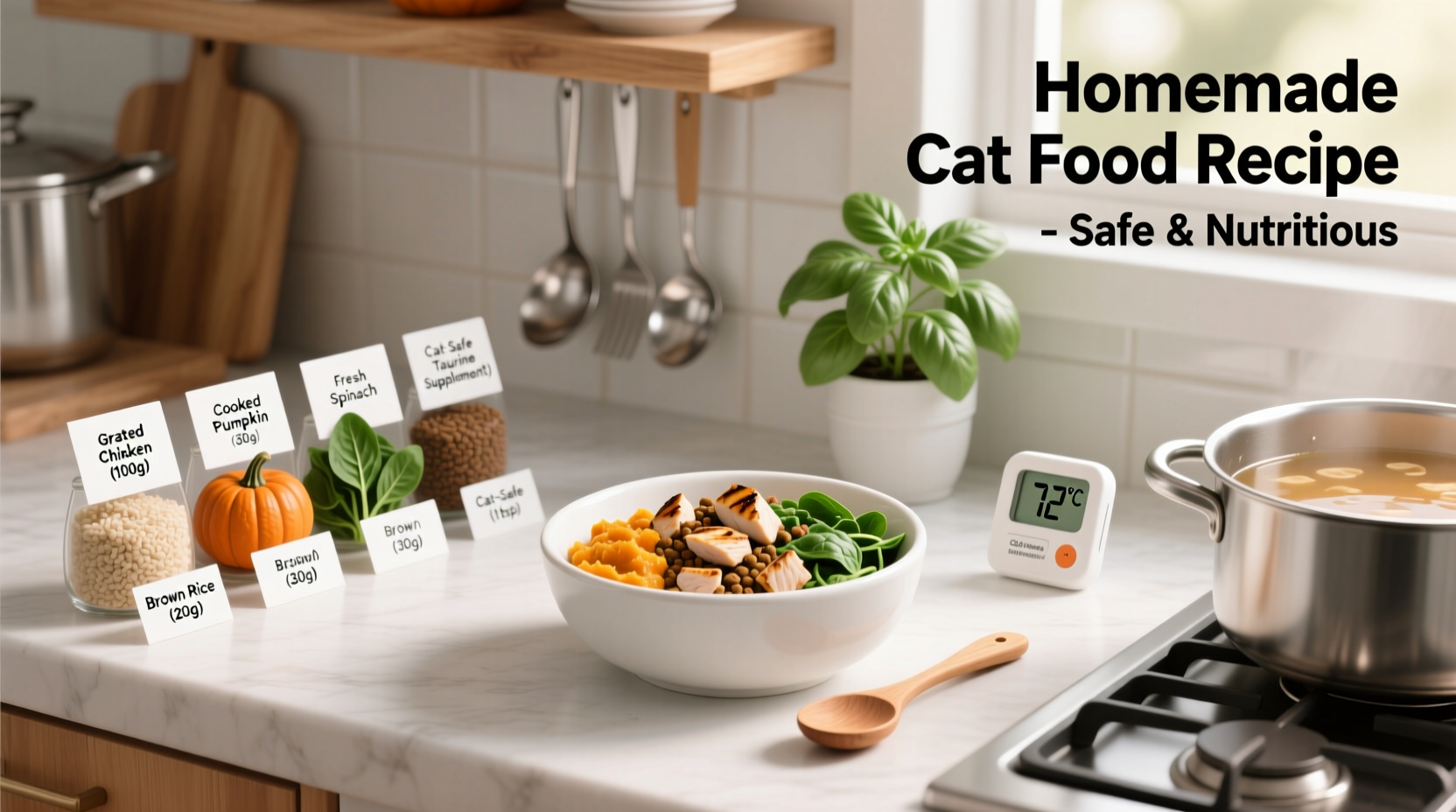Wondering if homemade cat food is right for your feline friend? You're not alone—nearly 40% of cat owners consider preparing homemade meals, seeking better control over ingredients and addressing specific health concerns. But without proper nutritional balance, homemade diets can cause serious health issues. This guide delivers veterinarian-approved methods to create safe, complete homemade cat food that meets your cat's biological needs as an obligate carnivore.
Why Nutritional Balance Matters More Than You Think
Cats aren't small dogs—they're obligate carnivores with unique nutritional requirements that differ significantly from humans and other pets. Unlike commercial foods formulated to meet AAFCO (Association of American Feed Control Officials) standards, homemade recipes often lack critical nutrients unless carefully calculated.
According to research published in the Journal of Animal Physiology and Animal Nutrition, 95% of online homemade cat food recipes are nutritionally inadequate. The most common deficiencies include:
- Taurine (essential for heart and vision health)
- Arachidonic acid (vital fatty acid cats cannot synthesize)
- Calcium-to-phosphorus ratio imbalances
- Vitamin E and B-complex deficiencies
| Nutrient | Commercial Complete Food | Typical Homemade Recipe | Health Impact of Deficiency |
|---|---|---|---|
| Taurine | 0.2% dry matter | Often absent | Heart disease, blindness |
| Calcium:Phosphorus | 1.1-1.3:1 ratio | Often inverted ratio | Skeletal deformities, fractures |
| Arachidonic Acid | Included | Rarely supplemented | Skin issues, poor growth |
| Vitamin E | Adequate levels | Insufficient in meat-only diets | Muscle weakness, reproductive issues |
Your Step-by-Step Preparation Framework
Creating nutritionally sound homemade cat food isn't about following a simple recipe—it's about understanding the framework that ensures complete nutrition. Here's what veterinary nutritionists recommend:
Essential Components Breakdown
Every batch should contain these precisely measured components:
- 70-80% muscle meat (chicken, turkey, beef, or fish)
- 10-15% organ meat (5-10% liver, 5% other secreting organs)
- 5-10% bone or calcium supplement (critical for proper mineral balance)
- Essential supplements (taurine, vitamin E, vitamin B complex)
- Optional additions (fish oil for omega-3s, limited vegetables)

Sample Basic Recipe (8oz serving)
This veterinarian-reviewed template provides complete nutrition when prepared correctly:
- 5.5oz chicken breast (muscle meat)
- 0.8oz chicken liver
- 0.4oz chicken heart
- 350mg calcium carbonate (or 1.5oz ground bone)
- 250mg taurine
- 50mg vitamin E
- 100mg potassium chloride
- 50mg magnesium sulfate
- 1/4 teaspoon fish oil
Critical Preparation Guidelines You Must Follow
Even with the right ingredients, improper preparation can compromise nutrition and safety:
Food Safety Protocol
The FDA reports that 25% of homemade pet food samples tested contained harmful bacteria. Protect your cat by:
- Using separate cutting boards and utensils exclusively for pet food
- Cooking meat to appropriate internal temperatures (165°F for poultry)
- Freezing portions immediately after preparation
- Thawing in refrigerator—not at room temperature
- Discarding uneaten food after 4 hours
Transitioning Safely to Homemade Food
Switching diets too quickly causes digestive upset. Follow this veterinary-recommended transition schedule:
- Days 1-2: 25% homemade, 75% current food
- Days 3-4: 50% homemade, 50% current food
- Days 5-6: 75% homemade, 25% current food
- Day 7+: 100% homemade food
When Homemade Food Isn't Appropriate
Despite good intentions, homemade diets aren't suitable for all cats. The American College of Veterinary Nutrition advises against homemade food in these situations:
- Kittens and senior cats (nutritional requirements are more precise)
- Cats with kidney disease, diabetes, or other medical conditions
- When owners cannot commit to precise measurements and veterinary monitoring
- If you're unwilling to consult with a board-certified veterinary nutritionist
For cats with special health needs, commercial therapeutic diets formulated by veterinary nutritionists often provide more consistent nutrient delivery than homemade alternatives.
Monitoring Your Cat's Response
After transitioning to homemade food, track these indicators of nutritional adequacy:
- Consistent energy levels (not lethargic)
- Shiny, healthy coat without excessive shedding
- Normal stool consistency (neither too hard nor too soft)
- Maintained healthy weight
- Regular veterinary checkups with blood work
According to UC Davis Veterinary Medicine, cats on homemade diets should receive comprehensive blood panels every 6 months to monitor for subtle nutrient deficiencies that might not show visible symptoms immediately.
Professional Guidance Is Non-Negotiable
Before starting homemade food, schedule a consultation with a board-certified veterinary nutritionist (find one through the American College of Veterinary Nutrition website). They'll provide:
- Personalized recipes based on your cat's specific needs
- Exact supplement dosages for your ingredients
- Monitoring protocols for long-term health
- Adjustments for changing nutritional requirements
Remember: What works for one cat might be dangerous for another. Individualized veterinary guidance isn't optional—it's essential for your cat's long-term health.











 浙公网安备
33010002000092号
浙公网安备
33010002000092号 浙B2-20120091-4
浙B2-20120091-4